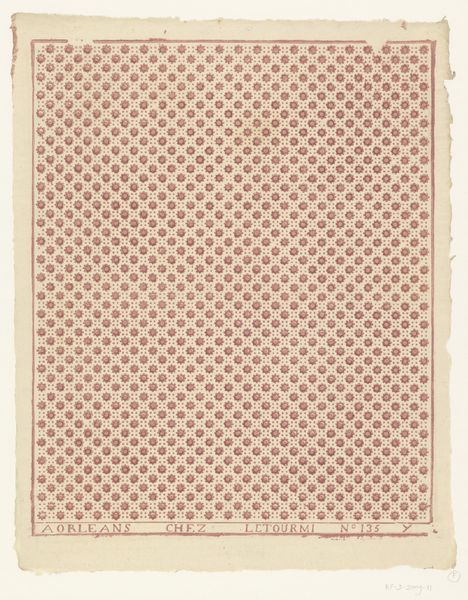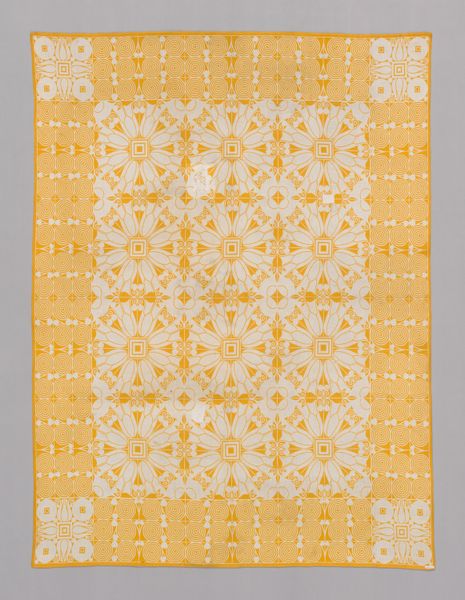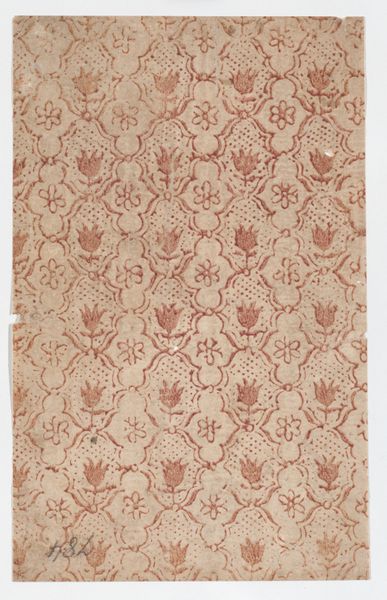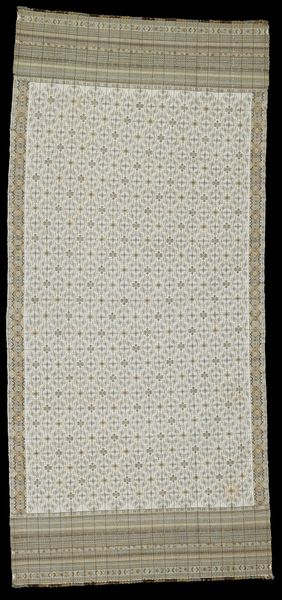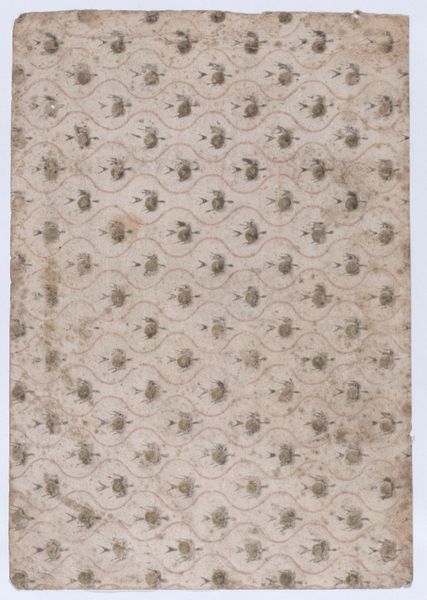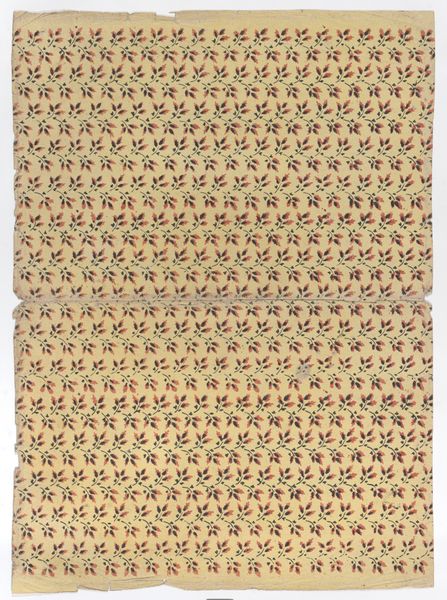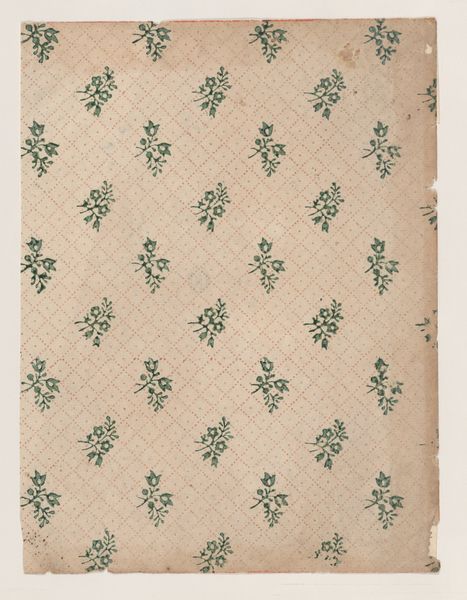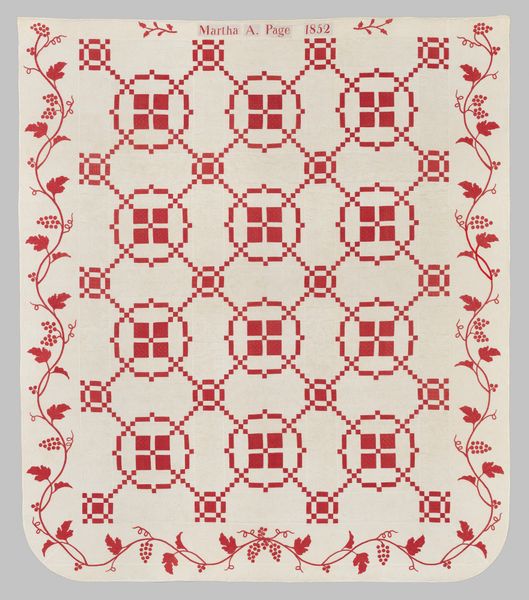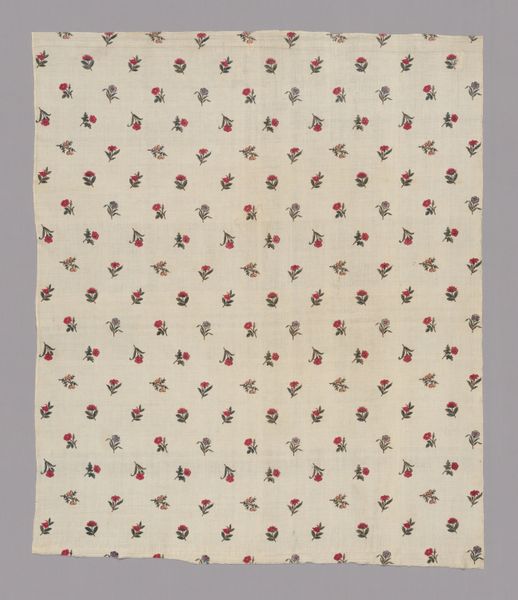
#
naturalistic pattern
# print
#
pattern background
#
pattern design
#
ethnic pattern
#
organic pattern
#
geometric
#
repetition of pattern
#
vertical pattern
#
pattern repetition
#
textile design
#
layered pattern
Dimensions: Sheet: 8 7/16 × 6 3/16 in. (21.5 × 15.7 cm)
Copyright: Public Domain
Editor: Here we have a "Sheet with dot grid pattern with flowers," likely from sometime in the 19th century. It's from an anonymous artist, a textile design rendered in print and drawing. There's something comforting in its repetition, a dense yet gentle pattern. How would you approach interpreting a piece like this? Curator: It’s compelling because it blurs lines. We see drawing and print used, techniques often segregated in the art world hierarchy. Consider the labor involved. Was this design intended for mass production? Or perhaps something more bespoke? The material itself tells a story of production processes, from ink or dye creation to the crafting of the printing blocks. What materials might it be made of and where do they come from? Editor: That's a really interesting way to look at it. The choice of materials and the production definitely reflects cultural priorities, I suppose. Do you see the "anonymous" authorship in this context, too? Curator: Precisely. Anonymity isn’t a void. It's a consequence of the prioritization of the final product – the textile itself – over the individual "artistic genius". Were they a craftsperson or artist? We can think about where this object stands in our understandings of art and labor. What sort of access did women, or non-Western artists, have to these techniques, and what impact would this design have on domestic settings? Editor: So by looking closely at materials and methods, we get insight into broader social structures. I never thought about pattern-making in that way before. Curator: Absolutely! And we can begin to dismantle the artificial divide between “fine art” and the functional, everyday objects that shape our lives. It urges us to look beyond aesthetics and ask about the economic and social forces at play in its creation. Editor: It makes me think about the politics inherent in our spaces. Thanks.
Comments
No comments
Be the first to comment and join the conversation on the ultimate creative platform.


